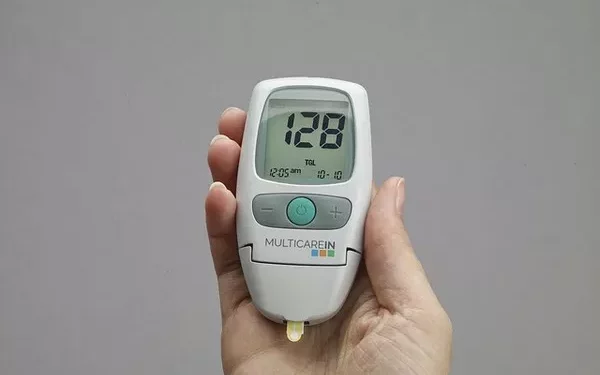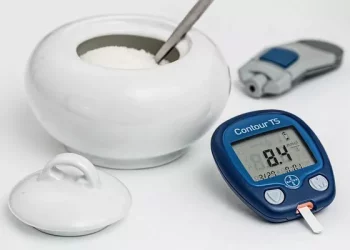For individuals managing diabetes, maintaining blood sugar levels within a healthy range is crucial to prevent both short-term and long-term complications. One of the critical moments for monitoring blood glucose levels is after meals. While most people focus on pre-meal glucose levels, postprandial (after-meal) blood glucose levels are equally important. These levels provide valuable information about how the body is responding to food intake and how well it is managing glucose metabolism.
This article explores what the blood sugar levels should ideally be 3 hours after eating, the factors influencing these levels, and the impact of diet, exercise, medication, and other lifestyle factors on postprandial blood glucose regulation.
The Importance of Postprandial Blood Sugar Monitoring
When you eat, your body breaks down carbohydrates into glucose (sugar), which enters your bloodstream. The hormone insulin, secreted by the pancreas, helps the body absorb this glucose and use it for energy. In individuals without diabetes, blood glucose levels usually rise after eating but return to baseline within two to three hours.
For individuals with diabetes, this process is impaired, and their blood glucose levels may remain elevated for a prolonged period after meals. Monitoring postprandial glucose levels is an essential part of diabetes management because it helps identify how the body is responding to food and insulin. It can also provide insight into how well the diabetes management plan is working.
What is a Normal Sugar Level 3 Hours After Eating?
After consuming food, blood glucose levels typically rise as the body digests the food and absorbs glucose. However, in individuals without diabetes, the body’s insulin response ensures that these levels return to normal fairly quickly.
For individuals with diabetes, postprandial blood glucose levels can vary, depending on factors such as insulin sensitivity, meal composition, and how well their diabetes is being managed. However, there are general guidelines for what the ideal blood sugar levels should be three hours after eating.
For People Without Diabetes: After eating, a person without diabetes typically experiences a rise in blood sugar, which peaks at around 1-2 hours post-meal. Blood sugar levels should then return to normal, typically around 70-100 mg/dL (3.9–5.6 mmol/L), within 2 to 3 hours.
Therefore, 3 hours after eating, a normal blood glucose level for someone without diabetes is usually between 70-100 mg/dL (3.9–5.6 mmol/L), or close to pre-meal levels.
For People With Diabetes: Individuals with diabetes may experience delayed or insufficient insulin response, which can lead to higher blood glucose levels after meals. According to the American Diabetes Association (ADA), the general target for postprandial blood glucose levels in people with diabetes is less than 180 mg/dL (10 mmol/L) within 1-2 hours after eating. By the 3-hour mark, this level should ideally be closer to 140 mg/dL (7.8 mmol/L), though this can vary depending on the individual’s specific health conditions and treatment plan.
For most individuals with diabetes, postprandial blood glucose levels should ideally fall within the range of 140-180 mg/dL (7.8–10 mmol/L) three hours after eating, although many healthcare providers recommend aiming for levels on the lower end of this range for better long-term outcomes.
Why Postprandial Blood Sugar Levels Matter
Postprandial blood glucose levels are critical for managing diabetes and preventing complications. Uncontrolled post-meal blood sugar spikes can significantly increase the risk of both acute and long-term complications associated with diabetes, such as:
Cardiovascular Disease: Elevated postprandial blood glucose levels are a significant risk factor for heart disease and stroke. The longer the blood sugar stays elevated after meals, the more damage it can do to blood vessels and the heart.
Retinopathy (Eye Disease): Prolonged high blood sugar can damage the blood vessels in the eyes, leading to diabetic retinopathy, a leading cause of blindness in adults.
Neuropathy (Nerve Damage): Persistent high blood sugar can damage the nerves, particularly in the legs and feet, leading to neuropathy, which can cause pain, numbness, and even loss of sensation.
Kidney Damage: Chronic high blood glucose levels can harm the kidneys, leading to diabetic nephropathy, which may eventually result in kidney failure.
By controlling postprandial glucose levels, individuals with diabetes can reduce their risk of these complications and improve their overall quality of life.
Factors That Affect Postprandial Blood Sugar Levels
Several factors can influence postprandial blood glucose levels. These include:
Type of Food Consumed: The type of food you eat has a significant impact on how quickly your blood glucose rises. Foods high in carbohydrates, especially refined sugars and simple carbs, can cause rapid spikes in blood glucose. In contrast, foods that are rich in fiber, protein, and healthy fats tend to result in slower, more controlled increases in blood glucose.
Simple Carbs vs. Complex Carbs: Simple carbohydrates, such as sugary snacks, refined grains, and sugary beverages, are digested quickly and cause a rapid increase in blood glucose. Complex carbohydrates, such as whole grains, legumes, and vegetables, are digested more slowly and cause a more gradual rise in glucose levels.
Glycemic Index: The glycemic index (GI) is a measure of how quickly a particular food raises blood glucose levels. Foods with a high GI, such as white bread and sugary desserts, cause a more significant rise in blood glucose, while foods with a low GI, such as vegetables and legumes, lead to more stable glucose levels.
Fiber Content: Foods that are high in fiber, particularly soluble fiber, can help slow the absorption of glucose into the bloodstream, reducing the risk of postprandial spikes in blood sugar.
Meal Composition: The overall composition of a meal plays an essential role in how it affects blood glucose levels. Meals that contain a balance of carbohydrates, proteins, and fats tend to have a more moderate impact on blood sugar compared to meals that are primarily carbohydrate-based.
Protein and Fat: Both protein and healthy fats can slow the absorption of carbohydrates, leading to a slower rise in blood glucose levels. For individuals with diabetes, meals that contain moderate amounts of protein and healthy fats can help maintain more stable blood sugar levels.
Portion Size: The amount of food consumed at a meal also influences how much glucose enters the bloodstream. Large meals, particularly those that are high in carbohydrates, can lead to more significant postprandial spikes.
Insulin and Medication Use: The amount of insulin or other diabetes medications an individual takes can directly affect postprandial blood glucose levels. People who use insulin or oral medications such as metformin may need to adjust their doses based on the carbohydrate content of their meals.
Pre-meal Insulin Dosing: Some individuals with type 1 diabetes or type 2 diabetes may need to administer insulin before meals to manage blood glucose levels. Proper insulin dosing before meals can help prevent large spikes in blood sugar after eating.
Medications that Slow Digestion: Certain medications, such as GLP-1 receptor agonists (e.g., liraglutide), can slow the rate at which food leaves the stomach, which can help reduce post-meal blood sugar spikes.
Physical Activity: Exercise plays a significant role in blood sugar regulation. Physical activity helps the body use glucose more efficiently and can lead to a decrease in blood sugar levels. Engaging in moderate physical activity after a meal, such as walking, can help improve postprandial blood glucose control.
Post-meal Exercise: Even light activity, such as a 10-15 minute walk, can help reduce blood sugar levels after a meal. Exercise improves insulin sensitivity and glucose uptake by the muscles, which can help lower blood sugar levels.
Stress and Sleep: Both stress and poor sleep can negatively affect blood glucose regulation. Stress triggers the release of hormones such as cortisol, which can increase blood glucose levels. Poor sleep can also interfere with insulin sensitivity, leading to higher blood sugar levels after meals.
Stress Management: Practices such as deep breathing, meditation, and yoga can help reduce stress and improve postprandial glucose control.
Sleep Hygiene: Ensuring adequate and quality sleep each night can support better blood sugar regulation.
How to Achieve Optimal Postprandial Blood Sugar Levels
Maintaining optimal blood glucose levels after meals involves a combination of factors. Here are some strategies that can help individuals with diabetes manage their postprandial glucose levels effectively:
Choose Low Glycemic Index Foods: Focus on foods that have a low glycemic index (GI) to help minimize blood sugar spikes. Examples of low-GI foods include whole grains, legumes, non-starchy vegetables, and most fruits.
Balance Your Meals: Aim for a balance of carbohydrates, protein, and healthy fats in each meal. This will help slow the absorption of glucose and prevent sharp spikes in blood sugar.
Exercise After Meals: Engage in moderate physical activity after meals to help lower blood glucose levels. A short walk or light stretching can help reduce post-meal glucose spikes.
Monitor Your Blood Glucose Levels: Regularly monitoring your postprandial blood glucose levels can help you understand how different foods and lifestyle factors affect your blood sugar. This allows for more informed decisions about your diabetes management.
Manage Stress and Sleep: Incorporate stress management techniques into your daily routine and prioritize good sleep hygiene to help regulate blood sugar levels.
Work with a Healthcare Provider: Consult with your doctor or diabetes care team to develop an individualized diabetes management plan. They can help adjust medications, provide dietary recommendations, and offer guidance on optimizing your blood glucose levels.
Conclusion
Understanding what your blood sugar levels should be three hours after eating is a critical aspect of managing diabetes effectively. Postprandial blood glucose levels reflect how well the body is handling the food consumed and can provide valuable insights into the effectiveness of your diabetes management plan. For most people with diabetes, post-meal glucose levels should ideally be between 140-180 mg/dL (7.8–10 mmol/L) at the three-hour mark. However, individual goals may vary, and it is essential to work with a healthcare provider to determine what is best for you.
By focusing on the factors that influence postprandial blood glucose, such as food choices, meal composition, insulin use, exercise, and stress management, individuals with diabetes can improve their glucose control and reduce the risk of complications. With careful planning, monitoring, and lifestyle modifications, achieving optimal postprandial blood sugar levels is entirely possible and essential for living well with diabetes.
Related topics:
What Foods Lower A1C Naturally





















